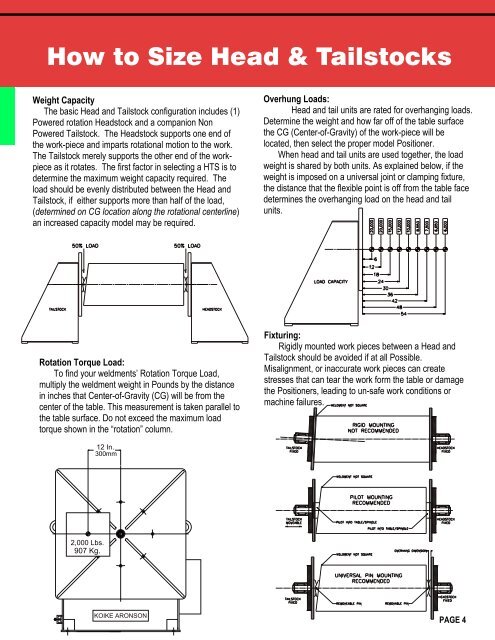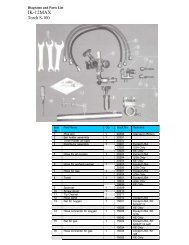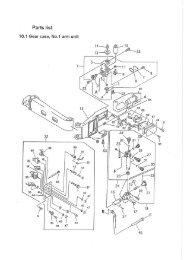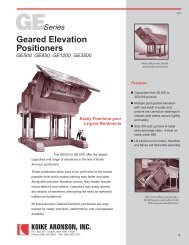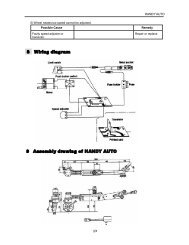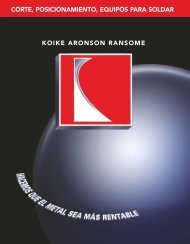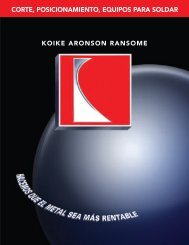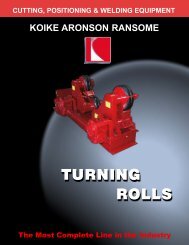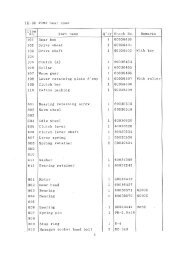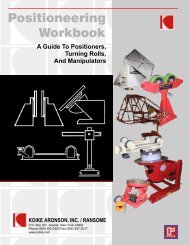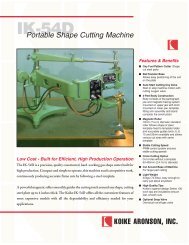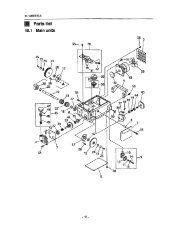Create successful ePaper yourself
Turn your PDF publications into a flip-book with our unique Google optimized e-Paper software.
How to Size Head & <strong>Tailstock</strong>s<br />
Weight Capacity<br />
The basic Head and <strong>Tailstock</strong> configuration includes (1)<br />
Powered rotation <strong>Headstock</strong> and a companion Non<br />
Powered <strong>Tailstock</strong>. The <strong>Headstock</strong> supports one end of<br />
the work-piece and imparts rotational motion to the work.<br />
The <strong>Tailstock</strong> merely supports the other end of the workpiece<br />
as it rotates. The first factor in selecting a HTS is to<br />
determine the maximum weight capacity required. The<br />
load should be evenly distributed between the Head and<br />
<strong>Tailstock</strong>, if either supports more than half of the load,<br />
(determined on CG location along the rotational centerline)<br />
an increased capacity model may be required.<br />
Overhung Loads:<br />
Head and tail units are rated for overhanging loads.<br />
Determine the weight and how far off of the table surface<br />
the CG (Center-of-Gravity) of the work-piece will be<br />
located, then select the proper model Positioner.<br />
When head and tail units are used together, the load<br />
weight is shared by both units. As explained below, if the<br />
weight is imposed on a universal joint or clamping fixture,<br />
the distance that the flexible point is off from the table face<br />
determines the overhanging load on the head and tail<br />
units.<br />
Rotation Torque Load:<br />
To find your weldments’ Rotation Torque Load,<br />
multiply the weldment weight in Pounds by the distance<br />
in inches that Center-of-Gravity (CG) will be from the<br />
center of the table. This measurement is taken parallel to<br />
the table surface. Do not exceed the maximum load<br />
torque shown in the “rotation” column.<br />
Fixturing:<br />
Rigidly mounted work pieces between a Head and<br />
<strong>Tailstock</strong> should be avoided if at all Possible.<br />
Misalignment, or inaccurate work pieces can create<br />
stresses that can tear the work form the table or damage<br />
the Positioners, leading to un-safe work conditions or<br />
machine failures.<br />
12 In.<br />
300mm<br />
2,000 Lbs.<br />
907 Kg.<br />
KOIKE ARONSON<br />
PAGE 4


